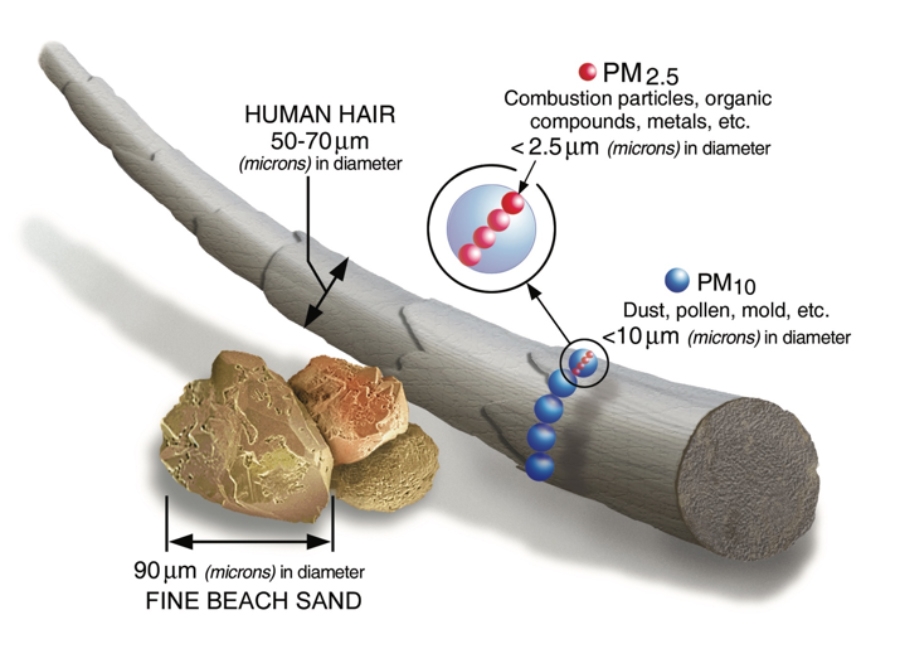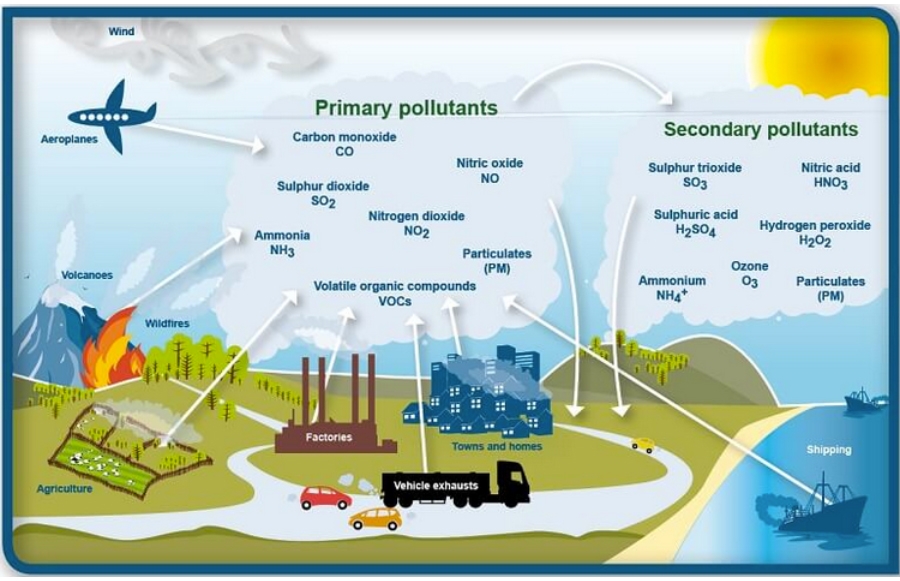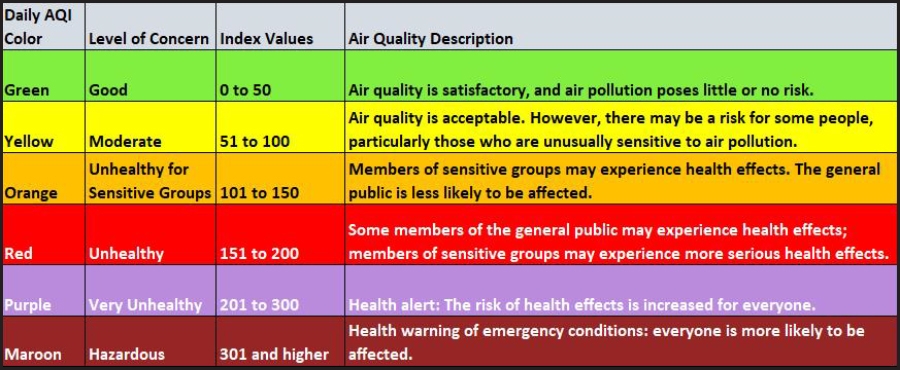Cue The Magic School Bus theme song folks because today we’re going on a journey to learn more about particulate matter!
But first…what exactly is a particulate?
Particulates are microscopic liquid or solid particles of matter that exist suspended in the air. Such particulates are commonly referred to as atmospheric particulate matter, particulate matter (PM), atmospheric aerosol particles, and suspended particulate matter (SPM).

*Image courtesy of the EPA. To learn more about PM visit the EPA’s website here.
What causes particulates?
Particulates can be formed by natural forces or by human action/inaction. An example of a particulate that’s formed by natural forces would be particulates from forest fires. An example of particulates that are due to human forces would be emissions from vehicles.

*Image courtesy of the Global Weather and Climate Center
So why do these tiny things even matter?
Based on the size of the particulate, they can either cause you no issues whatsoever or they can do some serious damage to you via your lungs and in some cases affect your overall health. The size of particulates is what determines whether they get filtered out by the lungs or if they end up settling in your lungs and/or bronchi.
It’s been generally agreed upon that particulates smaller than 10 micrometers (coarse particulate matter, PM10) can settle into the deepest parts of the lungs and cause damage within the bronchioles or alveoli. Along with that, particulates that are fine particulate matter (PM2.5) are able to penetrate the alveoli and even smaller particulates (ultrafine particulate matter, PM0.1), are able to pass through the lungs completely and affect both organs and blood.
How the heck are we measuring this?!?
Traditionally, particulate matter is determined using the measurement of micrograms per cubic meter (µg/m³). And the technology we have in place makes measuring PM overall easy by measuring the PM concentration or particle size distribution.

*Image courtesy of the U.S. National Park Service
Being able to measure particulate matter gives us the ability to differentiate between good and bad air quality and all that comes with it. Isn’t it wonderful that the technology we need to monitor and measure it exists?
As more and more instances begin to pop up requiring monitoring and measurement of particulate matter, it’s time to get ahead of the game so you can keep your customer’s buildings safe and secure. Particulate matter sensor units can come with or without display, field adjustable alarm relays, BACnet/Modbus, and in some cases tricolor LCD for visualization of the overall air quality index.
Browse our offering of particulate matter sensors here or call us today to get what you need. We’re here to help you make sure your next job gets done the easy way—the Kele way!
